.
19.09.2015 / 15.18 MESZ
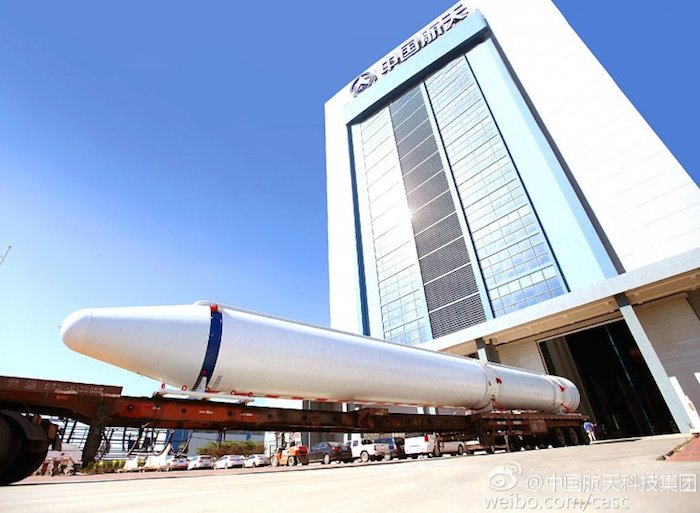
A booster of the upcoming Long March 7, one of China's next generation rockets, in Tianjin, North China. (Photo: CASC)
.
At 0700 Beijing time on Saturday (2300 UTC on Friday), China will perform the first ever launch of a Long March 6 rocket. Neither its size nor its payload – including a number of small amateur radio satellites – are notable, yet the event will mark a new era in Chinese spaceflight.
China’s established Long March series has helped the country go from putting its first satellite into space in 1970, to achieving human spaceflight in 2003, establish communications and navigation systems, Earth observation constellations, and put its first space lab into low Earth orbit.
However, after beginning development in the 2000s, the Long March 6 is the first of a long-waited new generation of Chinese launch vehicles, designed to take China’s space ambitions to the next level.
Together with the Long March 5 and 7 rocket families, Long March 6 has been designed to meet China’s future requirements for its space programs, providing increased reliability and adaptability, lower costs and preparation, and allow much heavier payloads to be put in orbit.
“The Long March 6 is for relatively light payloads and intended to give them a quick turnaround time capability. It gives them more flexibility in satellite launches, but it is the Long March 5 that will really signal a leap forward in Chinese capabilities,” says Joan Johnson-Freese, Professor of National Security Affairs at the US Naval War College, but expressing her own views.
New possibilities - including Moon mission?
Saturday’s launch will be the first real flight test of the YF-100 engine, based on Russia’s RD-120. The YF-100 will also power the heavy-lift Long March 5, which will be capable of lifting 25 tonnes to Low Earth Orbit.
Having a rocket comparable to the American Delta-IV Heavy will treble China’s payload lifting capacity, and bring many new possibilities, and possibly a trip to the Moon.
“China’s three step human spaceflight program, Shenzhou, relies on the Long March 5 to lift its large space station to orbit, and in order to do a human lunar mission - anticipated as their “next step” - the Long March 5 is needed as well,” Johnson-Freese explains.
The Long March 5 will also launch the ambitious Chang’e-5 lunar mission, which aims to put a lander on the Moon and return samples to Earth in 2017.
Long March 5 and medium-lift Long March 7 missions will lift off from a massive new space port constructed in Wenchang on the island province of Hainan.
The Wenchang Satellite Launch Centre, from which launches will take advantage of the Earth’s greater rotational speed at lower latitudes, took six years to construct and cost an estimated five billion yuan (US$800 million) and is another crucial component in China’s plans.
“What this means for the US and all space faring nations is another indicator that China is a long-term player in space with expanding capabilities. It cannot be denied or ignored, as the US has tended to do,” notes Johnson-Freese.
Technological advance
Professor Huang Jun at the Beijing University of Aeronautics and Astronautics told gbtimes that the new rockets mark a major technological development for China.
“My opinion is that, despite the fact that China has made great progress in its series rocket and space launches in the past few decades, there is still a big gap between China and the world's advanced level,” says Huang.
“Therefore, the development of these new launch vehicles is to meet the further space and deep space exploration on one hand, and to catch up the world's most sophisticated space technologies.”
“This new generation of Chinese launch vehicle series uses universal modularized design which can be easily combined into new rocket variants for various missions. The reliability and launch preparation time are improved and the launching cost will be lowered.”
Huang also notes that the incendiary agents used for these rockets are kerosene and liquid hydrogen which are non-toxic, low or non-polluting compared with the highly toxic unsymmetrical dimethyl hydrazine (UDMH) used in the current Long March 2-4 series.
Due to strategic concerns of the early days of the Cold War, China’s three operational launch centres are inland, meaning rocket debris – and remaining hydrazine fuel – poses a threat to those downrange of launches. The new rockets and launch centre will help reduce these risks.
Inspiring China; military concerns
Huang notes that the development of China’s next-generation rockets and their uses can have a major impact on China, and including on national economic construction and the defence industry, and the new rockets may promote related industries progress and economic prosperity.
“The successes of manned spaceships and deep space explorers such as Chang'e lunar probes would inspire the morale of Chinese people to build a better China.”
Outside of the China, the interpretation of the meaning of tomorrow’s launch will be somewhat different, says Joan Johnson-Freese:
“Since more than 90 percent of space technology is dual use – of value to both the military and civilian space communities - the Long March 6 will be heavily analysed in terms of what types of military capabilities it will afford the PLA (People’s Liberation Army), and I’m sure there will be some. Just giving it increased rapid access to space will be important.”
.
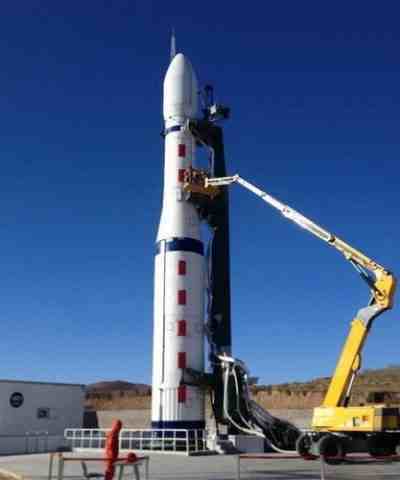
Long March 6 maiden flight
The run-up to the launch of the Long March 6 itself has been low-key, with a number of postponements so far this year. Finally however, 2300 UTC on Friday (0700 Beijing time on Saturday), will see the maiden flight
Images of the rocket itself have been scarce, with a view of the new launch tower at the Taiyuan launch centre in North China's Shanxi province only being provided via a distance, leaked image:
.

The 29m long, 108 tonne Long March 6 can lift 1,080kg to Sun synchronous orbit, and was developed by the Shanghai Academy of Space Technology and China Academy of Space Technology.
This first flight will send the payload of 20 small satellites, including nine amateur satellites, to Sun synchronous orbit at an altitude of 530 km, with a 97 degree inclination. The payload somewhat reflects the higher risks and unknowns associated with a maiden flight.
Those participating include Zhejiang University, Tsinghua University, the National University of Defence Technology and other space research institutes.
One of these, LilacSat-2, is an 11kg amateur radio nano-satellite developed by 15 students at the Harbin Institute of Technology in Heilongjiang province.
Wang Feng, the professor in charge of LilacSat-2, told gbtimes that the mission is giving students a chance to gain an experience they would otherwise not get, and for them to learn corresponding designs and help in future job hunting. Other details about the mission, especially concerning the rocket, were off limits until after launch.
While the mission objectives are modest, a successful first flight of the YF-100 would bode well for China’s next generation of launch vehicles.
The Long March 5, with a huge five metre diameter, is scheduled to make its debut flight early next year. The ambitious Chinese space program depends on its success.
.
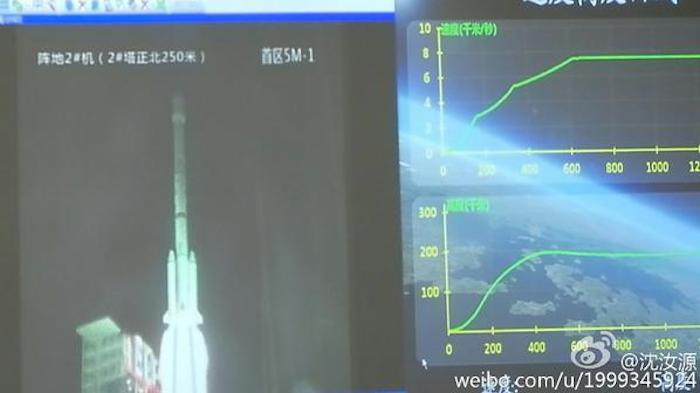
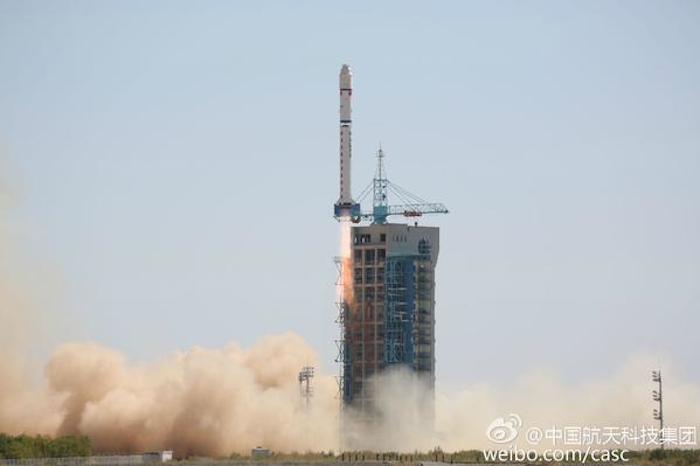
Quelle: gbtimes
-
Long March 6 carrier rocket to send 20 small satellites into space
China's Long March 6 (CZ-6) carrier rocket is set to be launched in Taiyuan, in North China's Shanxi Province on Saturday, sending 20 small satellites into space, media reported Thursday.
Designed by the China Aerospace Science and Technology Corporation, developer of the Shenzhou VII spacecraft, the CZ-6 is a non-toxic and pollution-free rocket which features a number of next-generation technologies, including a liquid oxygen kerosene engine.
The rocket was wholly developed in China at low cost, high reliability, strong adaptability and good safety, Chinese media reported.
The 20 satellites were developed by prestigious universities in China including Zhejiang University, Tsinghua University and other research institutes.
According to previous report, CZ-6 is capable of placing not less than 1 ton of payload into a sun-synchronous orbit at a height of 700 kilometers.
Another rocket, the Long March 11 carrier rocket (CZ-11) is expected to be launched in Jiuquan, in Northwest China's Gansu Province on September 25, carrying three satellites.
The CZ-11 is the first solid launch vehicle designed by the China Academy of Launch Vehicle Technology, and takes mere hours to launch in comparison to other rockets which usually take months to prepare.
China outlined its five-year space mission in 2011. Among the items outlined are the launch of manned spaceships, next-generation rockets and the use of cleaner fuel, all of which are expected to help the country realize its goal of building a space station by 2020.
Two more rockets, the Long March-5 and Long March-7, will be launched in 2016.
The former, under development by the China Academy of Launch Vehicle Technology, uses non-toxic and pollution-free propellant, and is capable of placing 25-ton payloads into near-Earth orbit, or placing 14-ton payloads into geostationary orbit.
The latter is capable of placing 5.5-ton payloads into orbit at the same altitude as CZ-6.
Quelle: GLOBAL TIMES
-
Update: 21.15 MESZ
.
China delayed todays launch of the Long March 6 Rocket which first in a new generation of Long March Rockets
China's Long March 6 (CZ-6) carrier rocket was set to be launched in Taiyuan, in North China's Shanxi Province on Saturday, sending 20 small satellites into space. It appears the launch may have been postphoned
Designed by the China Aerospace Science and Technology Corporation, developer of the Shenzhou VII spacecraft, the CZ-6 is a non-toxic and pollution-free rocket which features a number of next-generation technologies, including a liquid oxygen kerosene engine.
The rocket was developed in China at low cost, high reliability, strong adaptability and good safety.
Another rocket, the Long March 11 carrier rocket (CZ-11) is expected to be launched in Jiuquan, in Northwest China's Gansu Province on September 25, carrying three satellites.
The CZ-11 is the first solid launch vehicle designed by the China Academy of Launch Vehicle Technology, and takes mere hours to launch in comparison to other rockets which usually take months to prepare.
China outlined its five-year space mission in 2011. Among the items outlined are the launch of manned spaceships, next-generation rockets and the use of cleaner fuel, all of which are expected to help the country realize its goal of building a space station by 2020.
Two more rockets, the Long March-5 and Long March-7, will be launched in 2016.
The LM-7, along with the lighter Long March 6 and heavier Long March 5, will act as China's next generation of space launch vehicles
The LM-7 is a mid-heavy weight, 600 ton launch rocket, similar to the SpaceX Falcon 9 rocket. It is likely to replace the man-rated Long March 2 rocket, which is currently used to launch China's manned Shenzhou space missions. However, the LM-7 is estimated to carry 13.5 tons (depending on booster rocket configuration) of cargo in low earth orbit, which is a 50% increase over the LM-2.
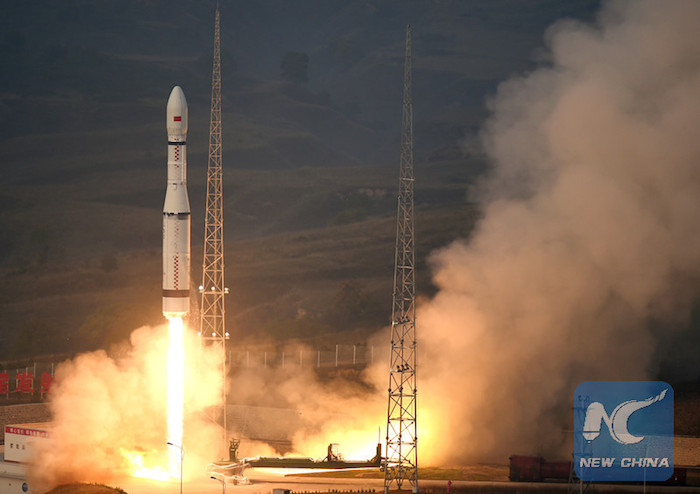
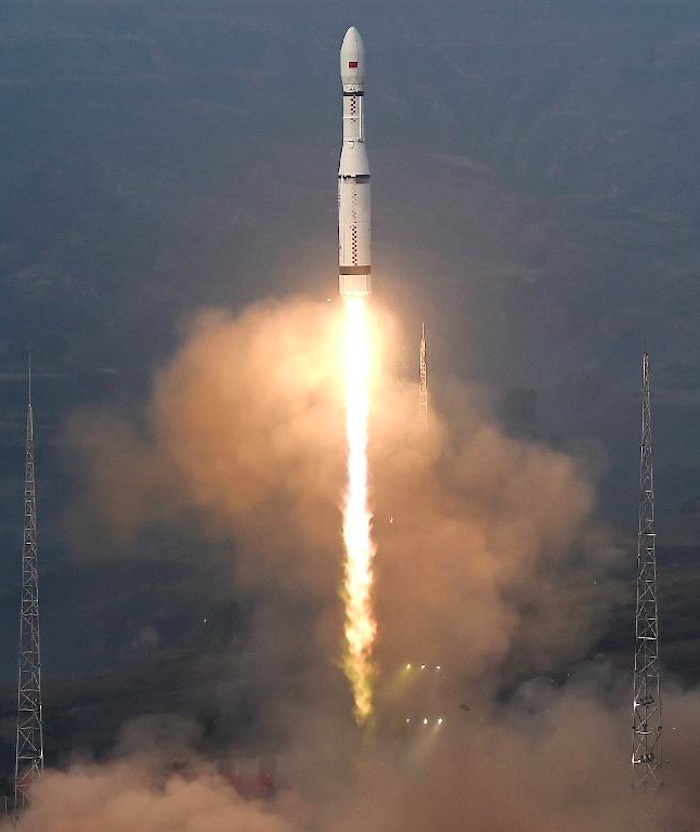
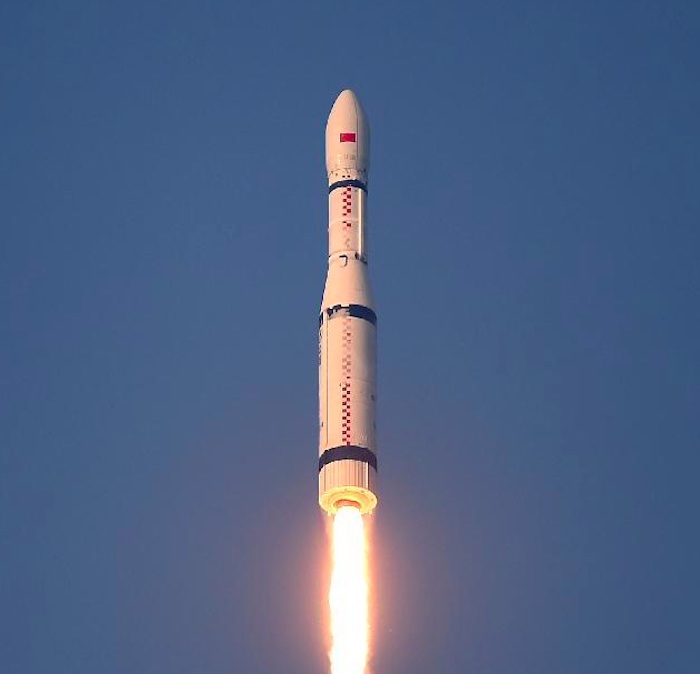

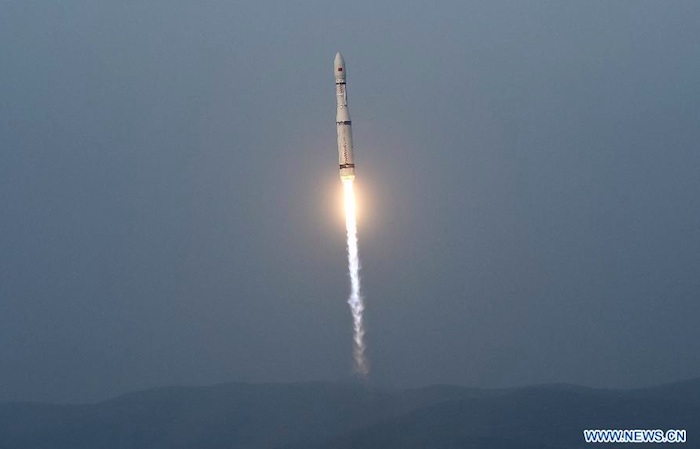
China developed the YF-100 engine based on the Russian RD-120. Staged combustion is also used for the 18-ton-thrust kerosene second-stage engine of the Long March 7.
China has used help from Ukraine to develop the engines.
Still, with a thrust of 120 metric tons (260,000 lb.), the YF-100 is not a very large engine. Engineers of China's Academy of Aerospace Propulsion Technology—Li Ping, Li Bin and Yu Zou—emphasized in a paper published last year that China was still behind in space propulsion. Their proposal, probably representing official thinking, is to develop the largest kerosene-oxygen rocket that China could use commercially—with up to three times the thrust of the YF-100—and then give it double combustion chambers to create an engine twice as large again. This, it appears, is China's path to propulsion for a Moon rocket.
Quelle: NBF
-
Update: 20.09.2015
.
China's new carrier rocket succeeds in first trip

A new model of China's carrier rocket Long March-6 carrying 20 micro-satellites blasts off from the launch pad at 7:01 a.m. from the Taiyuan Satellite Launch Center in north China's Shanxi Province, Sept. 20, 2015
.
TAIYUAN, China successfully launched a new model of carrier rocket, Long March-6, at 7:01 a.m. Sunday from the Taiyuan Satellite Launch Center in north China's Shanxi Province.
The rocket carried 20 micro-satellites into the space, which will be used for space tests.
The new rocket is fueled by liquid propellant made of liquid oxygen and kerosene. It is China's first carrier rocket that uses fuel free of toxicity and pollution, said the source with the Shanghai Academy of Spaceflight Technology with the China Aerospace Science and Technology Corporation, which designed the rocket.
The launch has tested the feasibility and accuracy of the rocket's design as well as other new technologies.
The new carrier rocket will be mainly used for the launch of micro-satellites.
.




Quelle: Xinhua
-
4594 Views
